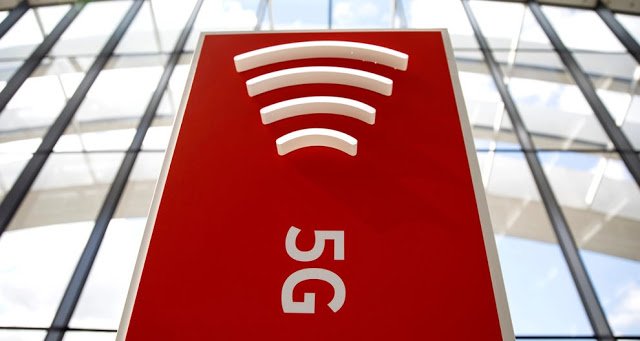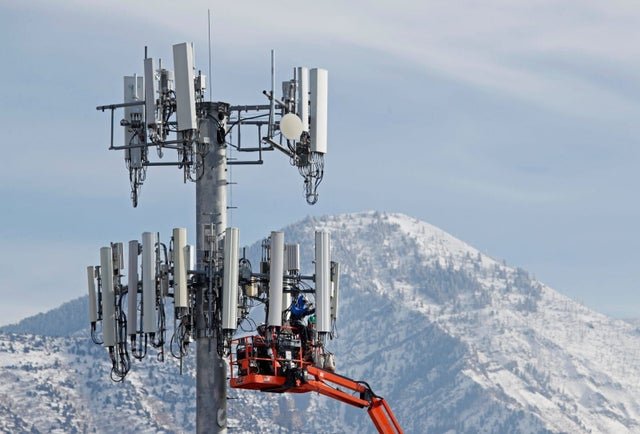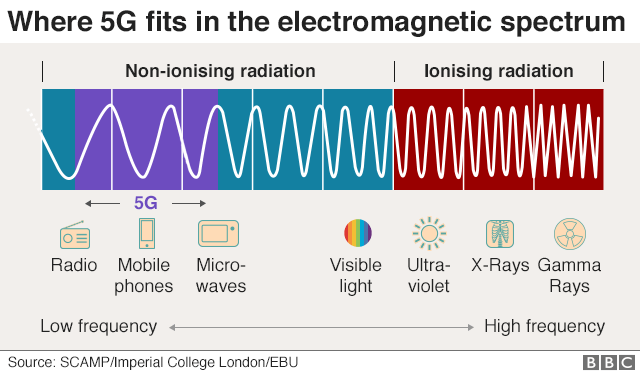No, 5G is not causing the coronavirus pandemic

Coronavirus conspiracy theories remain rife as the pandemic continues, from rumours of an NHS-enforced alcohol ban to an outlandish claim that helicopters were going to spray the entire UK with disinfectant.
One of the more enduring items of fake news centres around 5G, which theorists believe is at the root of the global outbreak despite the claim being debunked by fact-checking organisations as far back as January.
A post widely shared on Facebook, which claimed that 5G was rolled out of Wuhan, the Chinese city at the centre of the early outbreak, now carries a warning that it has been debunked by independent fact-checking charity Full Fact."The main implication of the claim—that 5G can impact immune systems—is totally unfounded," Full Fact's Grace Rahman wrote in the report. "There is no evidence linking the new coronavirus to 5G."
The agency also found no evidence that Wuhan was the first city to receive 5G coverage, instead pointing out it was one of several Chinese cities where early 5G trials took place.
When searching for "coronavirus" on Facebook, where users are advised to visit the NHS website for the latest information, false adverts claiming to promote a cure for the virus have also been circulated on the network.
The company announced it would begin to remove content "with false claims or conspiracy theories that have been flagged by leading global health organisations and local health authorities that could cause harm to people who believe them" on 30 January, though many debunked claims remain accessible in 5G group pages.

he Advertising Standards Agency (ASA) banned an advert in January from Electrosensitivity-UK, a charity claiming to inform the public about the supposed health risks of electromagnetic radiation, which featured allegations 5G could damage people’s health with effects including reduced male fertility, disturbed sleep and cancer.
It said the advert breached its advertising code and could not appear again in its current form, adding that people would understand from the advert that there was “robust, scientific evidence that demonstrated negative human health effects caused by 5G signals”.
All scientific evidence points to 5G in its current form being non-harmful to humans. Like its predecessor, it uses radio signals over a range of frequency bands to transmit and receive voice and data by communicating with base stations - stationary radio transmitters with antennas mounted on masts or buildings.
The radio waves transmitted by base stations are a form of non-ionising electromagnetic radiation, falling at the lower end of the naturally-occurring electromagnetic spectrum, which is measured in frequency and wavelength.

HomeTechNo, 5G is not causing the coronavirus pandemic
No, 5G is not causing the coronavirus pandemic
April 04, 2020
Coronavirus conspiracy theories remain rife as the pandemic continues, from rumours of an NHS-enforced alcohol ban to an outlandish claim that helicopters were going to spray the entire UK with disinfectant.
One of the more enduring items of fake news centres around 5G, which theorists believe is at the root of the global outbreak despite the claim being debunked by fact-checking organisations as far back as January.
A post widely shared on Facebook, which claimed that 5G was rolled out of Wuhan, the Chinese city at the centre of the early outbreak, now carries a warning that it has been debunked by independent fact-checking charity Full Fact."The main implication of the claim—that 5G can impact immune systems—is totally unfounded," Full Fact's Grace Rahman wrote in the report. "There is no evidence linking the new coronavirus to 5G."
The agency also found no evidence that Wuhan was the first city to receive 5G coverage, instead pointing out it was one of several Chinese cities where early 5G trials took place.
When searching for "coronavirus" on Facebook, where users are advised to visit the NHS website for the latest information, false adverts claiming to promote a cure for the virus have also been circulated on the network.
The company announced it would begin to remove content "with false claims or conspiracy theories that have been flagged by leading global health organisations and local health authorities that could cause harm to people who believe them" on 30 January, though many debunked claims remain accessible in 5G group pages.
The Advertising Standards Agency (ASA) banned an advert in January from Electrosensitivity-UK, a charity claiming to inform the public about the supposed health risks of electromagnetic radiation, which featured allegations 5G could damage people’s health with effects including reduced male fertility, disturbed sleep and cancer.
It said the advert breached its advertising code and could not appear again in its current form, adding that people would understand from the advert that there was “robust, scientific evidence that demonstrated negative human health effects caused by 5G signals”.
All scientific evidence points to 5G in its current form being non-harmful to humans. Like its predecessor, it uses radio signals over a range of frequency bands to transmit and receive voice and data by communicating with base stations - stationary radio transmitters with antennas mounted on masts or buildings.
The radio waves transmitted by base stations are a form of non-ionising electromagnetic radiation, falling at the lower end of the naturally-occurring electromagnetic spectrum, which is measured in frequency and wavelength.
Non-ionising radiation includes infra-red, ultraviolet and visible light, FM radio and Wi-Fi signals, and is too weak to break chemical bonds - thus cannot cause DNA or tissue damage. Ionising radiation, conversely, includes gamma and X-rays and can cause cancer and other health issues.
UK network operators are required to comply with guidelines from the International Commission on Non-Ionising Radiation Protection (ICNIRP), a non-profit based in Germany which publishes scientific-based advice on the adverse effects of non-ionising radiation backed by both the World Health Organisation (WHO) and International Telecommunication Union (ITU).
The ICNIRP's guidelines extend well beyond the frequencies under discussion for 5G (around 71GHz maximum), and apply up to 300 GHz. As milimetre waves will be generally deployed between the 24 and 29 GHz spectrum, energy generated would be confined to the surface layer of human skin, ruling out tissue, bone or skull penetration, and therefore tumour risk.
Consequently, the WHO's main conclusion from its reviews into electromagnetic fields is that "exposures below the limits recommended in the ICNIRP international guidelines do not appear to have any known consequence on health."
As the UK approaches its toughest weeks, please always check any news related to 5G you are spreading to ensure it is based on fact and science rather than another unsubstantiated rumour doing the rounds on the internet as you may be doing more harm than good no matter how well the intention.